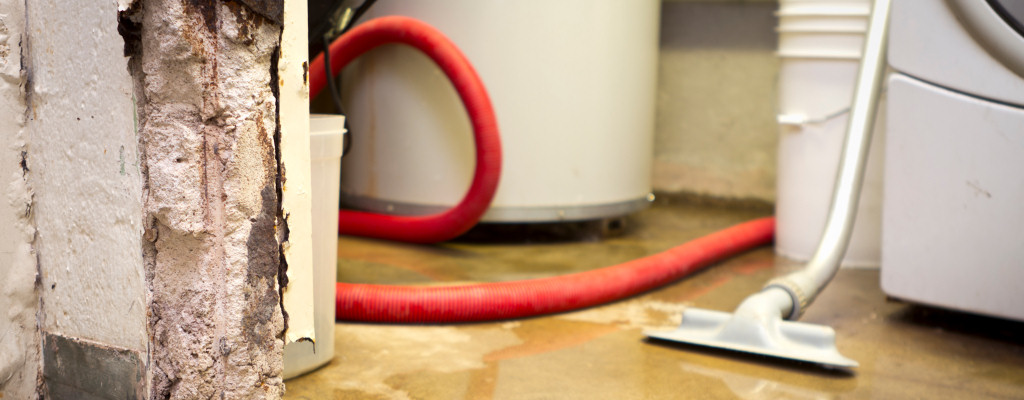We’re headed into the rainy season once again, and “you have water damage” is one of the scariest things a homeowner can hear. You know what that entails, but few know exactly what caused the damage, unless you’ve had the misfortune of experiencing a severe storm, leaky rook, or a burst pipe. Likewise, you may not know how much it’ll cost to fix the damage, how to replace damaged floors, walls, and insulation and finally, how to ensure that it never happens again.
Here’s everything you’ll need to know about water damage inside your home, including some of the most common causes, the cost to repair and a few safety tips.
Fix it fast
If you take one piece of advice away from reading this article, it’s that you must remove the water and fix the damage as soon as possible. The longer you wait to deal with water damage, the worse the overall damage will become. Unlike fires (which you can put out), water will continue to flow throughout your home, soaking into your walls and floors until it’s completely removed. It leaves a variety of complicated repairs to be made.
An expert restoration company will remove any standing water using various pumps, water suction tools, and high-powered fans. They may cut into walls and insulation to see how far the damage goes. Additionally, an electrician may have to cut wires and repair electric lines in your home.
Besides, if you don’t call a pro right away, mold could grow, causing health problems and greatly increasing your water restoration expense.
Water damage repair costs
Depending on the amount of damage, and due to the potential health issues (mold), repairing water damage is usually not cheap. Also, more often than not, removing the water and repairing the damage typically involves two separate expenses. According to disaster recovery cost estimates, it averages just over $2,000 to eliminate standing water and $1,800 to repair a water-damaged home.
Causes of water damage
Many issues can cause water damage, and it aids in prevention to be aware of them. They include:
- Flooding
- Burst/frozen pipes
- Roof leaks
- A failed bathtub or toilet seal
- Broken sump pump
- A blocked drainage pipe
- Failed gutters and downspouts
- Foundation issues
- Improper grading
- A broken irrigation system
- Human error (leaving a faucet running, for example)
Removing standing water
The water-removal process mainly depends on the cause. If a storm caused the flooding, you’ll probably have to wait until the water recedes from around your home. If it was due to a pipe, a plumber would need to get to work right away. Expect to pay overtime fees if the issue occurs during non-business hours.
Many homeowners prefer to tackle projects themselves, but removing standing water is far from a safe activity. Aside from the risk of mold and further damage to your home, hidden hazards such as rats, live electricity and other dangers make water removal and damage repair a project best left to trained – and properly equipped – professionals.
The water restoration process
Naturally, the first step in repairing water damage is to remove all standing water. More likely than not, this will require a pump and the other tools mentioned above to remove water from a flooded basement, inside a wall or elsewhere in your home. Once all of the water is removed, specialized equipment will dry the damp areas as quickly as possible. This helps prevent mold growth, which forms quickly after the initial damage.
Once the area is completely dry, the restoration company will check all walls to see the extent of the damage. You’ll probably need to replace at least some of the drywall and insulation.
Finally, the pros will check for foundation damage to ensure that the water didn’t affect the structural integrity of your home. In all but the most extreme cases, foundation damage won’t be an issue.
Preventing water damage
Sometimes, there’s just nothing you can do to prevent water damage, such as historically-severe storms or a failed sump pump. Fortunately, though, there are precautionary steps you can take to substantially reduce the odds of water damage occurring. Here are some suggestions:
- Free gutters of debris
- Check for foundation cracks and seal them
- Position downspouts away from the foundation
- Install window well covers
- Wrap exposed pipes to keep them from freezing
- Let cold water drip from the faucet occasionally
- Check your roof periodically
- Regularly check your HVAC system and water heater
If any of the above tasks cause concern, be sure to call a pro right away. A visit from a pro could save you thousands.
Once you know how to prevent water damage and learn the steps that pros take once it has happened, you can rest easy knowing that you can handle the situation as well as anyone. The key – as we mentioned above – is to always remember that the longer you wait to deal with water damage, the worse the consequences will be. Therefore, it’s essential to call a restoration company as soon as possible.


Comments are closed